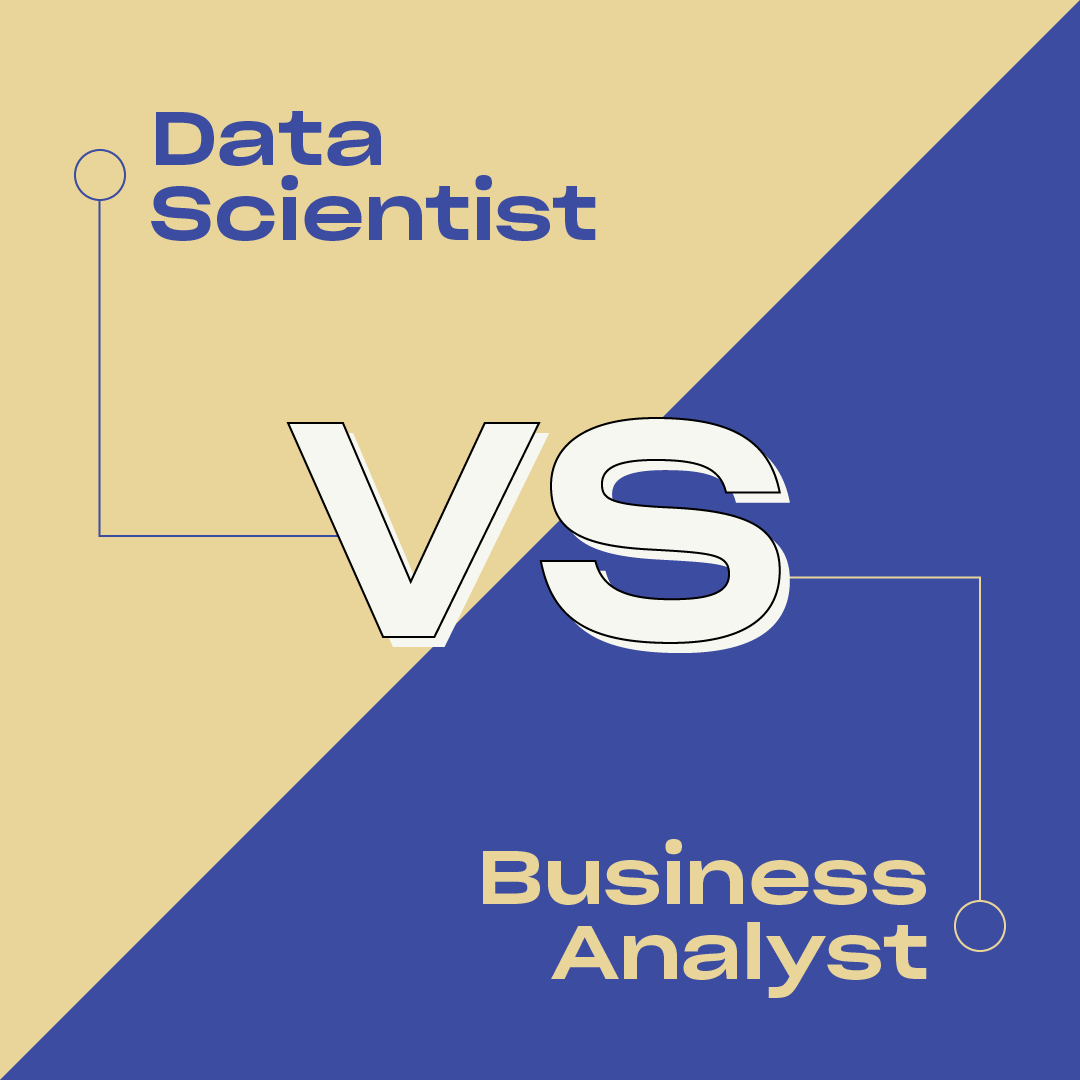Data collection is a reasonably well-established technique. In fact, forward-thinking companies started collecting data before determining how they would use it. Even though they didn't know how to extract this value, they knew the data was valuable. The question now is how to transform this data into actionable business intelligence.
Data science and business intelligence professionals are increasingly focusing their efforts on how to get the most out of all data. Data is becoming increasingly complex in terms of volume, speed and variety. New sources of structured and unstructured data from cloud and SaaS applications must be integrated into existing on-premises data warehouses. The need to make real-time judgments requires faster data collection and processing.
This article will show you data science and business intelligence. Additionally, it provides an in-depth comparison of data science and business intelligence.
What is Data Science?
Although there is no globally accepted definition of data science, it is widely recognized as a field that encompasses a variety of disciplines such as statistics, advanced programming skills, and machine learning to derive actionable insights from raw data.
Data science is the process of extracting value from a company's data to solve complex problems. It is important to remember that data science is still a young profession and that this definition is constantly evolving.
Why Data Science is Important?
Data science helps businesses predict, prepare and optimize their operations. Additionally, data science is crucial to user experience. Many organizations rely on data science to provide personalized and personalized services. For example, streaming services like Netflix and Hulu could suggest entertainment based on the user's viewing history and taste preferences. Subscribers spend less time searching for something to watch and quickly find value among hundreds of options, resulting in a unique, personalized experience. This is important because it improves subscriber convenience while increasing customer loyalty.
What are the Key Use Cases of Data Science?
- Healthcare: Data science has led to a number of advancements in the healthcare industry. Healthcare professionals are discovering new ways to study disease, practice preventative medicine, diagnose disease more quickly, and explore new treatment options thanks to a vast network of data now available, from EMRs to 'to clinical databases through the monitoring of personal activities. By evaluating medical test data and reported symptoms, data science improves patient diagnosis at an early stage and helps them provide more effective treatment.
- Cybersecurity: Kaspersky Lab, a global cybersecurity organization, uses data science and machine learning to detect approximately 360,000 new malware samples every day. The ability of data science to detect and understand new forms of cybercrime in real time is essential to our future security.
- Airlines: Another good example is the airline industry, which can use data science to improve its operations in various ways, such as: B. planning routes and deciding whether to schedule direct or connecting flights, creating predictive analytics models to predict flight delays, as well as personalized offers and promotions. Offers based on customer booking behavior and the decision on which aircraft class to purchase for the best overall performance.
- Banks: For example, if you give money on credit, the likelihood of customers making future repayments on time is an issue for you. Here you can create a model that uses predictive analytics to predict whether future payments will be made on time or not, based on the customer's payment history.
- Police: For example, a large city police department developed statistical incident analysis techniques to help officers determine when and where to deploy crime prevention resources. Data-driven technology generates reports and dashboards to help field workers improve their situational awareness.
What is Business Intelligence?
To support decision-making, business intelligence is the process of creating and sharing strategic information based on existing organizational data. The goal of business intelligence is to give you a complete picture of your company's current and historical data. When business intelligence (BI) was first introduced in the early 1960s, it was intended as a tool for sharing information between departments. Since then, BI has evolved into complex data analysis techniques, but communication remains its foundation.
Additionally, BI includes not only the procedures and methods to analyze data and answer specific business questions, but also the tools that support these methods. These self-service solutions allow customers to quickly view and understand business data.
Why Business Intelligence is Important?
Business Intelligence is more important than ever to provide comprehensive insight into business information as the amount of data continues to grow. This provides guidance for making informed decisions and finding areas for development, resulting in greater organizational effectiveness and a higher bottom line.
By visualizing current and historical data in the context of your business, business intelligence can help businesses make better decisions. Analysts can use BI to provide competitiveness and performance benchmarks, allowing the business to operate more smoothly and efficiently. Analysts can also more easily identify market trends, which can help increase sales or profits. When used correctly, data can help in everything from regulatory compliance to employment initiatives. Below are some examples of how Business Intelligence can help businesses make better data-driven decisions:
- Predicting Success
- Spotting Market Trends
- Discovering Issues or Problems
- Identifying Ways to Increase Profit
- Analyzing Customer Behavior
- Comparing Data with Competitors
- Tracking Performance
- Optimizing Operations
What are the Key Use Cases of Business Intelligence?
Advanced analytics: Predictive models aim to predict the future, while traditional analytics uses historical data to make more informed judgments about the future. Companies that use forecasting tools end up creating a simulation of future conditions to run through different scenarios and reach conclusions before their competitors. The granularity of the analysis and the type of assumptions used determine the accuracy and usability of predictive analytics.
Cloud Analytics: The cloud has wreaked havoc in several critical areas of enterprise software, including business intelligence and data management. You can expect this trend to continue as cloud technologies become more widespread. Companies looking for cloud BI and analytics technologies that support hybrid and multi-cloud deployment methods fall into this business intelligence use case. Data connectivity is a critical factor, just like in the self-service use case. Governance and security are also important.
Augmented analytics: Machine learning is used in augmented analytics to transform the way analytics content is created and consumed. Other advanced analytics functions covered by the technology include data preparation, data management, business process management, process mining, and data science. Organizations can also integrate augmented analytics results into their own applications. These operations are automated using augmented analytics, eliminating the need for data scientists.
Embedded Analytics: Embedded analytics software integrates analytics capabilities into a business application. To make data analysis more convenient, several self-service BI platforms allow users to integrate analytical dashboards into applications they use frequently. By integrating analytics into existing workflows, business users can access the features they need without leaving the settings they work in every day. Faster, more informed, and more effective decision-making often rewards users with more actionable insights. Self-Service Analytics: Self-service analytics allows non-technical users (e.g., business analysts) to connect directly to various data sources to analyze and visualize combined data sets. Data governance is also part of successful self-service methods. Because data governance ensures the accuracy and quality control of the information provided. Users are encouraged to establish partnerships to ensure data is available and accurate. Business definitions also need to be properly worded for effective use and reporting.
Understanding the Comparison Between Data Science and Business Intelligence
Differences between Data Science and Business Intelligence: Types of Data
Business Intelligence uses structured data that is often stored in data warehouses or silos. Similarly, while data science works with structured data, it mainly deals with unstructured and semi-structured data, which requires more time to clean and improve the quality of data.
Differences between Data Science and Business Intelligence: Perspective
Business Intelligence deals with the present, while data science deals with the future and predicts what might happen. Data science creates predictive models that anticipate future opportunities, while BI works with historical data to determine a responsive plan of action.
Differences between Data Science and Business Intelligence: Results
When it comes to business intelligence, reporting is essential. Examples of other business intelligence outputs include creating dashboards and running ad hoc queries. The end goal of data science outcomes is the same, but they emphasize long-term, future-oriented projects. Instead of using enterprise visualization tools, projects create models in production. These programs also make predicting future consequences more important than focusing BI on the current state of a business.
Differences between Data Science and Business Intelligence: Process
The contrast between individual processes arises from the perspective of time, which also shapes the character of the results. The first step in business intelligence analysis is descriptive analysis, which creates the framework for what has already happened. Visualizations allow non-technical business users to capture and interpret data. For example, instead of relying on direct website traffic, business owners can use promotional emails to calculate how many X items were sold in July. This leads to more research and analysis on why certain channels perform better than others.
Using point X above as an example, data science would use an exploratory method. Instead of answering business questions about performance first, you should examine data based on its characteristics, test hypotheses, and examine common trends. Data scientists often start with a difficult question or problem, but this often evolves as the research progresses.
Differences between Data Science and Business Intelligence:
Flexibility Data science is all about flexibility, as additional data sources can be added in the future if necessary. Business Intelligence offers very little flexibility. Estimation of data sources should be done in advance. It's also slow if you need to add more data sources. Differences between Data Science and Business Intelligence: Complexity The scope of application of business intelligence is limited to the corporate sector. BI is about creating dashboards, creating business insights, organizing data, and extracting insights that help businesses grow and make them less complex. On the other hand, data science takes a much broader view. Data science uses a wide range of advanced statistical techniques and predictive models. Data science is much more complex than business intelligence. Differences between Data Science and Business Intelligence: Skills
Below are some of the key skills required for Business Intelligence:
- You have a good business vision and creative thinking.
- The ability to solve problems.
- Data analysis skills are necessary to make business decisions.
- Communication and presentation skills are exceptional.
- SQL data extraction function.
- In-depth knowledge of ETL (Extract, Transform, Load) tools is helpful.
- The skills required for data science include:
The skills required for data science include:
- Knowledge of Python, R, SAS and other technologies is required.
- Can perform complicated statistical data analysis.
- Working knowledge of Tableau, Matplotlib, ggplot2 and other data visualization tools is available.
- It is necessary to work with structured and unstructured data.
- Knowledge of SQL and NoSQL is required.
- Knowledge of machine learning algorithms is required.
- Knowledge of Big Data tools such as Hadoop and Spark.
Differences between Data Science and Business Intelligence: Responsibilities
Working in business intelligence involves a variety of roles, including:
- Commitment to commercial connectivity and source system identification.
- Focus on critical business areas and solution plans.
- Define business requirements in collaboration with project managers and clients.
- Data validation is performed.
- Implement approved proposals and achieve strategic objectives.
- BI program progress report.
Responsibilities of a data scientist include:
- Data preprocessing and transformation is carried out by a data scientist.
- Development of predictive models for future events.
- Optimize and improve the performance of machine learning models.
- Help industries identify questions that need answering.
- Storytelling is used to visually communicate results.
How do Data Science and Business Intelligence work together?
Although data science and business intelligence can provide important insights, the combination of the two provides the most information for making strategic decisions. Let’s take the case of a professional services company that was having difficulty winning calls for tenders. Because they have limited resources to respond to requests for proposals (RFPs), they opt for a data-driven process to determine which RFPs are most likely to be successful.
The organization decides to use business intelligence to analyze the results of previous tenders and create customer and project profiles with a high success rate. The company can then use data science and machine learning to create numerous hypotheses and scenarios to predict the likelihood of winning future projects. By combining business intelligence and data science, the company now has an ideal customer and project data profile to win new markets.
Although data science and business intelligence are used in decision-making, their insights are essential in determining how judgments are made. Because of its future orientation, data science is often at the forefront of strategic planning and choosing future courses of action. However, these judgments are generally proactive rather than reactive. Business Intelligence, on the other hand, helps make decisions based on performance or historical events. Both jobs aim to provide information that helps businesses make better decisions, but the time aspect separates them.
It’s easy to see how data science and business intelligence can help drive insights, but it’s the combination of the two that provides the most value.
What does the future hold for Data Science and Business Intelligence?
McKinsey's blog post claimed that machine learning was impacting at least twelve industries. According to the author, McKinsey has compelling data showing that data science, with its rich data capabilities (big data) and advanced analytics (machine learning), significantly outperforms traditional business intelligence, where static or historical data does not did not provide sufficient justification to users. to “predict” or “prescribe” future business events. Data science and machine learning have helped the company's IT team by providing tools to make fast and accurate predictions based on historical data patterns.
According to McKinsey, an effective support structure for business analytics activities, good architecture, and senior management involvement are critical to the success of an enterprise analytics platform. According to McKinsey, companies that invested adequately in analytics and BI infrastructure saw their margins increase by up to 19% over a five-year period.
Conclusion
As companies grow their businesses, managing large amounts of data becomes essential to achieving the desired efficiency. Data science and business intelligence enable stakeholders and management to manage their data in the best possible way. If you want to export data from a source of your choice to your desired database/destination, Hevo Data is the right choice for you!





